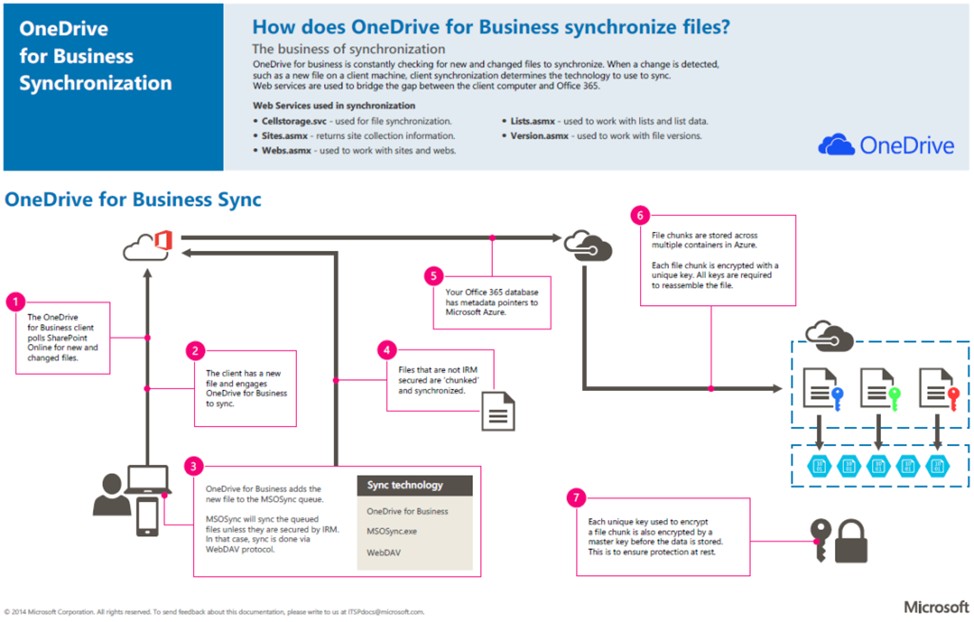
“Cloud data improves productivity and access, while improving security and simplifying operations”
Computer data used to be considered most secure when it was stored in on-premise servers or private data centers. This belief dates to the time when computers were hard-wired to the server through network access points.
Backups were a lengthy process, and there were countless anecdotes of failures, where backups could not be restored, or they had failed because of people or software problems.
Servers ‘going down’ is something that many people will recall and not fondly.
Denis O’Shea on Cloud Data and What It Means
Legacy File Servers Experience Downtime
Most people experienced file server updates prefaced with memos asking people not to use their computers during a specific time window. Commonly, updates would begin on Friday after work, and the in-house IT team would scramble to finish the updates before work started on Monday with emergency patches performed during the week.
Then returning to work the following week or morning, staff might find they were still unable to access their network files due to unanticipated problems or an unresolved issue. These problems might involve the need to purchase additional hardware, software, or bring in outside expertise. Even when performed well, downtime was experienced.
Legacy File Servers Require Back-up and Business Continuity Planning
The Business Continuity Plan (BCP) for large companies often involved leasing space in an offsite location where key people could go and log-on to a backup server to maintain critical business functions. Like life insurance, this was an expensive commitment you invested in but hoped you would never need.
IT Departments had to employ a range of experts, with skills in network engineering, security, database, software, mobile devices, and more. In the early days of computing, having specialized IT people on the payroll might have been a badge of recognition. In reality, these specialists added significantly to the cost of maintaining a business without generating income.
Some companies failed to implement and test their BCP infrastructure properly and suffered significant data loss.
On-Premise File Servers Require Storage Space and Infrastructure
Some of this legacy thinking is simply because that was how it was done back in the day. IT professionals were trained to maintain storage in on-premise servers. Even smaller companies had the “IT closet.” Today’s senior IT leaders grew up in this on-premise paradigm; it’s what most of us are used to.
Companies made considerable investments in storage, networks, large IT rooms with racks, backup power suppliers, air conditioning, communications controllers, security solutions, and the people with sufficient expertise to operate them, managing network efficiency access and security.
In the early days of cloud computing, cloud storage was not cheap or easily scalable, and ISP’s charged a lot for data communications. Those barriers no longer apply.
In-house File Servers Complicate Off-Network Access
Traditionally, remote access security was enabled using VPNs or virtual machines such as Citrix, both of which tend to slow down data communications and frustrate users. The complexity often resulted in connection issues for non-IT users having to cope with poor network access from hotels, airports, and other locations. This methodology often required access to a helpdesk, which might not have staff available at times when they were needed, such as after hours.
Further, VPNs add additional cost, and scale poorly when large numbers of employees work remotely. In larger companies, getting VPN access was a bureaucratic process, and employees sometimes had wait weeks before getting authorized for VPN access to the network. This delay lowered productivity, further raising costs, and leading to staff frustration.
The COVID-19 Factor
COVID-19 has been a game-changer for most businesses and organizations. Remote work became almost an overnight necessity, and companies who had not yet embraced cloud computing were on the back foot. Even after the lockdowns have become a memory, we now must all acknowledge that it is time for a change in the way we look at data storage.
A significant component of Business Continuity Plans is the need for expensive IT personnel to solve problems. That is a lot easier said than done when they cannot access the premises due to situations like the COVID19 lockdowns. With the cloud, this does not need to be a problem because this is typically part of the service.
For smart companies, remote work will become commonplace for many employees as will collaboration using applications such as Microsoft Teams.
The Rise of the Public Cloud
Microsoft has invested billions in their public cloud data solutions. Global economies of scale have driven down costs dramatically and Microsoft can afford to build in backup, redundancy, and security capabilities to a level that few businesses can afford.
Even the US Department of Defense awarded Microsoft a contract to build a secure cloud, rather than doing it in-house.
Switching to Cloud Data
In the modern workplace cloud computing means employees can work anywhere, anytime, on any device (A³). You wouldn’t think of limiting your employees to devices that have to be physically connected to a server today.
Still, if you don’t have a cloud data model, you will have the complexity of different rules for different devices and operating systems. Many companies with on-premise file servers have no way for smartphones to access files on the go. That complexity creates even more technical support overhead, whereas solutions such as Microsoft Intune and OneDrive for Business could be reducing it. Cloud data can be accessed from any internet connection on Windows, macOS, iOS, iPadOS, and Android devices. No VPN is required – it just works.
In today’s workplace, it makes little sense to host your own file server and keep your data on-premise. Cloud data is a core component of the modern workplace, and it comes with many advantages over traditional, on-premise storage.
Automatic Backup and Synchronization Includes Users’ Local Files
Gone are the days of documents being accidentally lost because they hadn’t been saved, resulting in frustration, wasted time, and frantic support calls to the IT Helpdesk.
Using Microsoft One Drive and Intune, you can configure users’ document folders to be stored in the cloud. This provides users with automatic backup of personal files. Additionally, all files stored in Teams and SharePoint get backed up.
These capabilities are included in Microsoft 365 licenses and Office 365 licenses, which means you no longer need to invest in and maintain 3rd party backup solutions. 
Mitigating the Risks with Disk and File Level Encryption, and Multifactor Authentication
Drive and File encryption is standard in the Microsoft Cloud and does not require a 3rd party solution. Even if a cloud drive were physically stolen, the drive would not boot without a BitLocker Key.
Using BitLocker, Microsoft’s disk and file-level encryption is highly sophisticated and multi-tiered. The content has multiple keys and is distributed across the data center. Furthermore, each individual file is broken into one or more chunks, called blobs, which are randomly distributed across multiple blob containers, each with its own key.
Passwords are no longer a guarantee of security. If someone knows a password, that does not ensure who the person is using it. Eighty percent of security breaches involve compromised passwords. Multifactor Authentication (MFA) minimizes that risk, using a separate trusted device and is user friendly for use by non-technical people.
MFA is built-in and comes with Azure, so it is seamless to integrate.
Live collaboration on all Microsoft Office files without a VPN
Data encryption used to slow down access to files but using a combination of encrypting data in transit, and while the computer is at rest, BitLocker only imposes a single-digit performance overhead.
OneDrive for Business provides the ability to share documents, files, and images with other people within an organization as well as with other authorized users. OneDrive for Business is also available for Apple iOS and Android devices, so sharing data is no longer device dependent.
With your data in the cloud, you will be able to perform live collaboration on Word documents, Excel spreadsheets, PowerPoint slides, and other office files with no user setup or configuration. The same permissions and file restrictions for sensitive files are baked in so you don’t have to worry about data loss either.
You can stop naming your files with “version1.2 final new final” and let automatic backup handle versioning under the hood. Just name the file what it is and let your team collaborate without ever sending an attachment to an email.
Dogfooding
Eating your own dog food is the practice of an organization using its own product, a term embraced by Microsoft with its development groups. It is a way that an organization can test its products in real-world usage. Dogfooding acts as quality control and testimonial advertising.
Founder and CEO of Mobile Mentor, Denis O’Shea, shares,
Conclusion
Zero Trust is one of the 6 pillars of Modern Endpoint Management. Leveraging it will simplify your IT operations and lead to happier, more engaged, and more productive employees.

We leverage Microsoft 365 technologies to reduce your costs while increasing security and delighting your employees. Learn more by clicking the button below.



